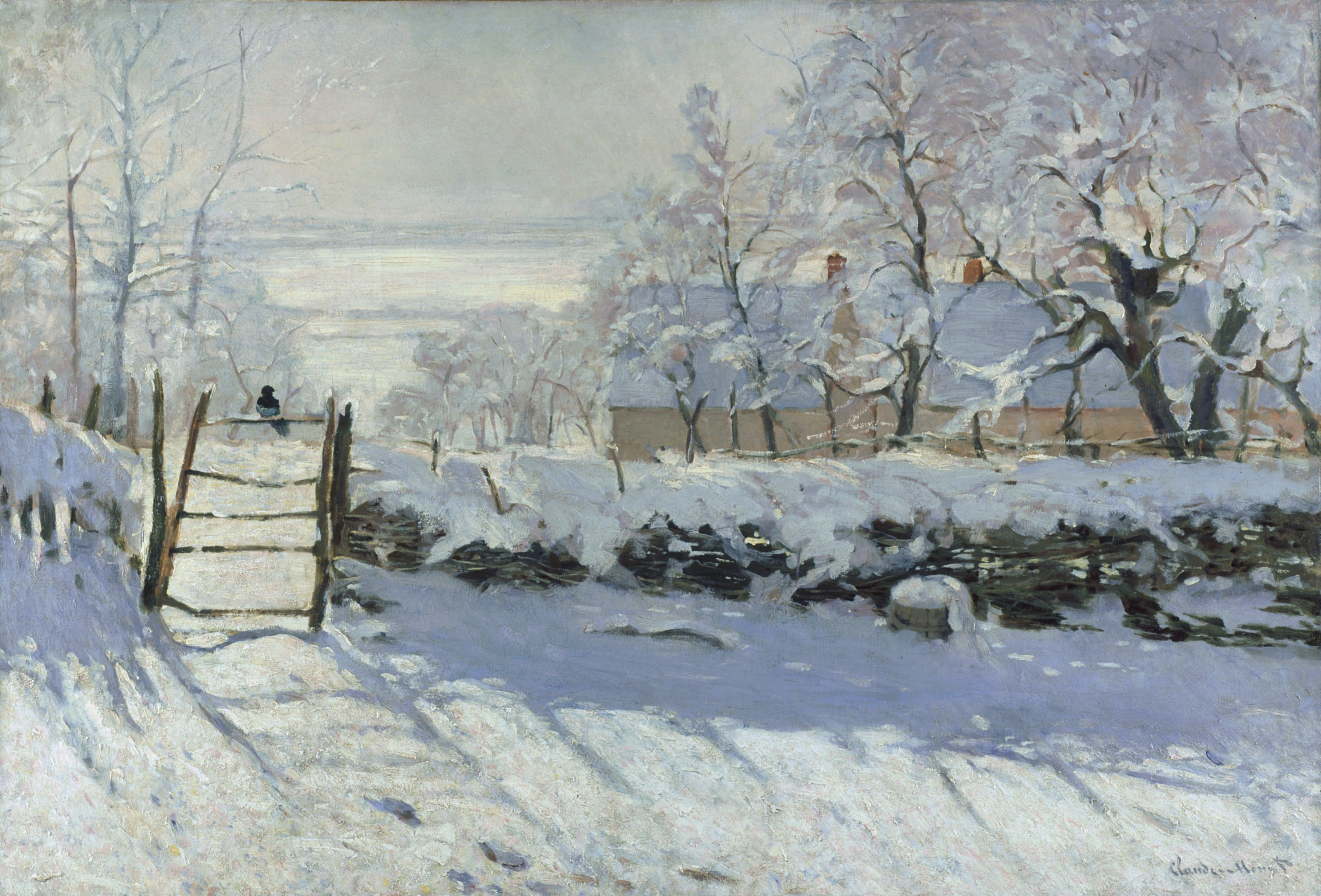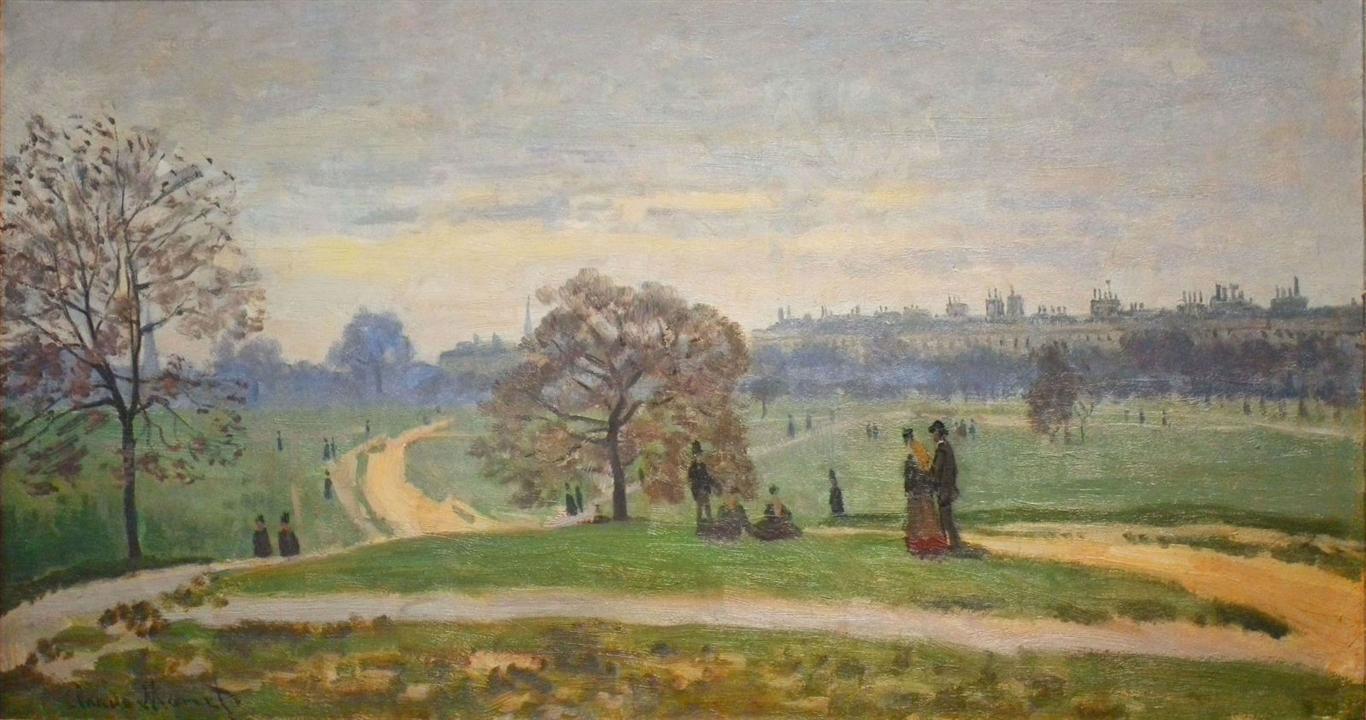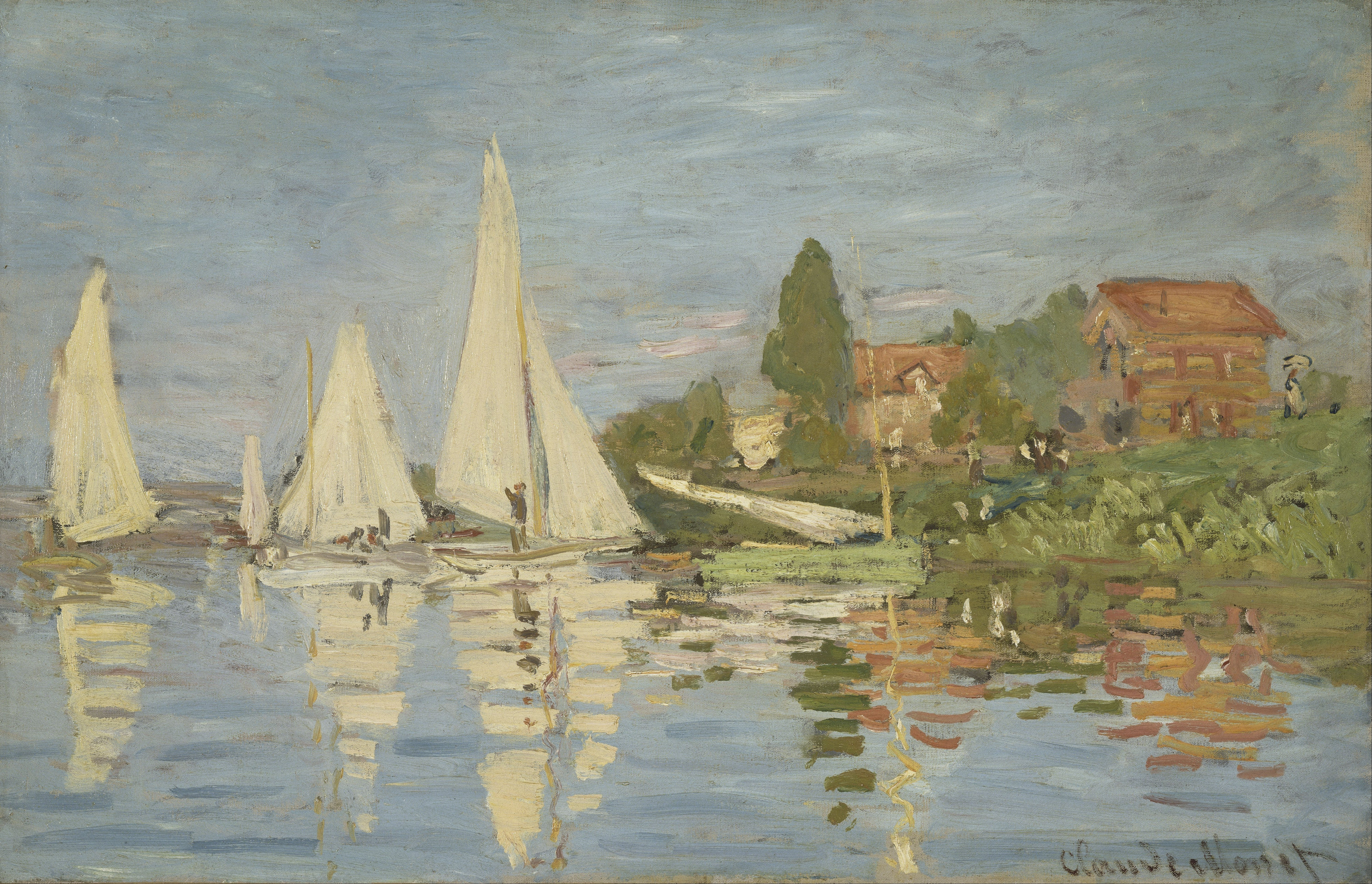Legion of Honor, San Francisco
February 25 through May 29, 2017

Claude Monet, La Grenouillère, 1869. Oil on canvas, 29 3/8 x 39 1/4 in. (74.6 x 99.7 cm). The Metropolitan Museum of Art, New York, H. O. Havemeyer Collection, Bequest of Mrs. H. O. Havemeyer, 1929, 29.100.112. Image: www.metmuseum.org
The Fine Arts Museums of San Francisco are pleased to announce Monet: The Early Years
at the Legion of Honor. This will be the first major US exhibition
devoted to the initial phase of Claude Monet’s (French, 1840–1926)
career. Through approximately sixty paintings, the exhibition
demonstrates the radical invention that marked the artist’s development
during the formative years of 1858 to 1872. In this period the young
painter developed his unique visual language and technique, creating
striking works that manifested his interest in painting textures and the
interplay of light upon surfaces.
Monet: The Early Years will be on view at the Legion of Honor in San Francisco from February 25 through May 29, 2017. This is the first of two exhibitions curated by George Shackelford, Deputy Director of the Kimbell Art Museum in Fort Worth, Texas to examine the full artistic career of Claude Monet. The companion exhibition, Monet: The Late Years, will come to San Francisco in 2019. Esther Bell is the curator of both exhibitions for the Fine Arts Museums of San Francisco.
IN DETAIL
The presentation opens with the first painting Monet exhibited in public,
View near Rouelles (1858, Maranuma Art Park, Saitama Prefecture Asaka Kamiuchimagi, Japan). Created when the artist was just 18 years old, this work demonstrates his early mastery of oil painting through his brilliant handling of color and also prefigures his lifelong affinity for the subject of landscapes.
From 1864 to 1868, he was simultaneously interested in capturing the geographies of his artistic life, from the cool, gray coast of Normandy to the warm, lush forest of Fontainebleau.
The Pointe de la Hève at Low Tide (1865, Kimbell Art Museum), which Monet exhibited in the Paris Salon of 1865 to critical acclaim, exemplifies his talent for conveying the dramatic atmosphere of a Normandy beach.
One of his finest treatments of the interior of the forest is
An Oak at Bas-Bréau, the Bodmer (1865, private collection), his detailed study of a tree named for the Swiss painter Karl Bodmer. This work will be shown publicly for only the second time in this exhibition.
During this period, Monet also aspired to create large-scale figure paintings intended for Salon exhibitions. In 1865 he began an ambitious plein-air composition,
Luncheon on the Grass (1865–1866, Musée d’Orsay), in response to
a painting of the same title by Édouard Manet (which was lambasted by critics when it was exhibited at the Salon des Refusés in 1863). Monet’s composition featured his future wife Camille Doncieux and friends Gustave Courbet, Frédéric Bazille and others having a picnic in the forest. Daunted by its large size, Monet abandoned the painting, which he eventually presented as collateral to a landlord when his rent was late. By the time Monet could afford to get the painting back, the canvas had become moldy. Monet cut the canvas into several pieces, two of which survive and are presented in this exhibition.
In contrast to the social conviviality represented in Luncheon on the Grass, the artist’s lesser-known still-life paintings from the same period, including
Still Life with Melon (ca. 1872, Museu Calouste Gulbenkian, Lisbon), are focused on reproducing objects in sensual and meticulous detail. This emphasis is also reflected in
Red Mullets (1869, Harvard Art Museums, Cambridge, Massachusetts), in which two stark and somber fish lay in opposing directions on a soft white cloth.
Monet was also proficient in creating portraits and genre scenes, many of which included members of his budding family. On view in the exhibition are two tender, affectionate paintings of his eldest son—
Jean Monet Sleeping (1867–1868, Ny Carlsberg Glyptotek, Copenhagen)
and The Cradle—Camille with the Artist’s Son Jean (1867, National Gallery of Art, Washington, DC), the latter also depicting Doncieux, by then his wife, who is set against a white curtain as she gazes over the infant.
The exhibition demonstrates Monet’s increasing mastery of painting the effects of light in multiple weather conditions. Such skills are notable in the two of eight works on loan from the Musée d’Orsay that show winter scenes,
A Cart on the Snowy Road at Honfleur (1865)
and The Magpie (1869), which shows with chilling stillness a single bird clinging to a fence in a snow-blanketed landscape.
Fleeing the Franco-Prussian War, Monet left France in 1871. He first moved to London, where he painted images of vast public parks
(Hyde Park, London, ca. 1871, RISD Museum).
Upon his return to France in 1872, Monet moved to Argenteuil, a town about 12 miles downriver from Paris, along the Seine, where he produced extraordinary views of the sky and water. A group of paintings that depict the towpath along the river capture the appearance of the scene at different times of the day, prefiguring his serial experiments two decades later, when he would paint a single subject under a wide array of atmospheric conditions.
Regatta at Argenteuil (ca. 1872, Musée d’Orsay) displays the looser handling of paint that the artist would further develop in the successive phases of his career. Monet: The Early Years tracks the young artist to the end of 1872, the moment his mature style began to emerge.
“This
is a once-in-a-lifetime opportunity for visitors to see Monet’s mastery
– before Impressionism,” says Max Hollein, Director of the Fine Arts
Museums of San Francisco. “Monet is ubiquitous – people tend to think
there is nothing more to know about him. This exhibition is revelatory.”
With
a selection of works gathered from some of the most important
international collections – the Musée d’Orsay in Paris, the National
Gallery of Art in Washington D.C., the Metropolitan Museum of Art in New
York and other public and private collections worldwide – Monet: The Early Years
authoritatively demonstrates the artist’s early command of many genres,
not only the landscapes for which he has become so renowned but also
still lifes, portraits and genre scenes.
“The
paintings from Monet’s early career are profoundly daring and
surprising,” comments Esther Bell, Curator in Charge of European
Paintings at the Fine Art Museums of San Francisco. “You see his mastery
of light and texture everywhere – in his depictions of large and small
moments, with friends and loved ones, in the solitude of forests and
fields and in the quiet scenes of everyday life. Every stroke commands
of our attention.”
This exhibition follows the Legion of Honor’s
strong history of showing highly important moments in French
Impressionism. By following Monet before Impressionism, visitors can see
the emergence of his style and how he helped shape the movement. Monet: The Early Years will be on view at the Legion of Honor in San Francisco from February 25 through May 29, 2017. This is the first of two exhibitions curated by George Shackelford, Deputy Director of the Kimbell Art Museum in Fort Worth, Texas to examine the full artistic career of Claude Monet. The companion exhibition, Monet: The Late Years, will come to San Francisco in 2019. Esther Bell is the curator of both exhibitions for the Fine Arts Museums of San Francisco.
IN DETAIL
The presentation opens with the first painting Monet exhibited in public,
View near Rouelles (1858, Maranuma Art Park, Saitama Prefecture Asaka Kamiuchimagi, Japan). Created when the artist was just 18 years old, this work demonstrates his early mastery of oil painting through his brilliant handling of color and also prefigures his lifelong affinity for the subject of landscapes.
From 1864 to 1868, he was simultaneously interested in capturing the geographies of his artistic life, from the cool, gray coast of Normandy to the warm, lush forest of Fontainebleau.
The Pointe de la Hève at Low Tide (1865, Kimbell Art Museum), which Monet exhibited in the Paris Salon of 1865 to critical acclaim, exemplifies his talent for conveying the dramatic atmosphere of a Normandy beach.
One of his finest treatments of the interior of the forest is
An Oak at Bas-Bréau, the Bodmer (1865, private collection), his detailed study of a tree named for the Swiss painter Karl Bodmer. This work will be shown publicly for only the second time in this exhibition.
During this period, Monet also aspired to create large-scale figure paintings intended for Salon exhibitions. In 1865 he began an ambitious plein-air composition,
Luncheon on the Grass (1865–1866, Musée d’Orsay), in response to
a painting of the same title by Édouard Manet (which was lambasted by critics when it was exhibited at the Salon des Refusés in 1863). Monet’s composition featured his future wife Camille Doncieux and friends Gustave Courbet, Frédéric Bazille and others having a picnic in the forest. Daunted by its large size, Monet abandoned the painting, which he eventually presented as collateral to a landlord when his rent was late. By the time Monet could afford to get the painting back, the canvas had become moldy. Monet cut the canvas into several pieces, two of which survive and are presented in this exhibition.
In contrast to the social conviviality represented in Luncheon on the Grass, the artist’s lesser-known still-life paintings from the same period, including
Still Life with Melon (ca. 1872, Museu Calouste Gulbenkian, Lisbon), are focused on reproducing objects in sensual and meticulous detail. This emphasis is also reflected in
Red Mullets (1869, Harvard Art Museums, Cambridge, Massachusetts), in which two stark and somber fish lay in opposing directions on a soft white cloth.
Monet was also proficient in creating portraits and genre scenes, many of which included members of his budding family. On view in the exhibition are two tender, affectionate paintings of his eldest son—
Jean Monet Sleeping (1867–1868, Ny Carlsberg Glyptotek, Copenhagen)
and The Cradle—Camille with the Artist’s Son Jean (1867, National Gallery of Art, Washington, DC), the latter also depicting Doncieux, by then his wife, who is set against a white curtain as she gazes over the infant.
The exhibition demonstrates Monet’s increasing mastery of painting the effects of light in multiple weather conditions. Such skills are notable in the two of eight works on loan from the Musée d’Orsay that show winter scenes,
A Cart on the Snowy Road at Honfleur (1865)
and The Magpie (1869), which shows with chilling stillness a single bird clinging to a fence in a snow-blanketed landscape.
Fleeing the Franco-Prussian War, Monet left France in 1871. He first moved to London, where he painted images of vast public parks
(Hyde Park, London, ca. 1871, RISD Museum).
Upon his return to France in 1872, Monet moved to Argenteuil, a town about 12 miles downriver from Paris, along the Seine, where he produced extraordinary views of the sky and water. A group of paintings that depict the towpath along the river capture the appearance of the scene at different times of the day, prefiguring his serial experiments two decades later, when he would paint a single subject under a wide array of atmospheric conditions.
Regatta at Argenteuil (ca. 1872, Musée d’Orsay) displays the looser handling of paint that the artist would further develop in the successive phases of his career. Monet: The Early Years tracks the young artist to the end of 1872, the moment his mature style began to emerge.
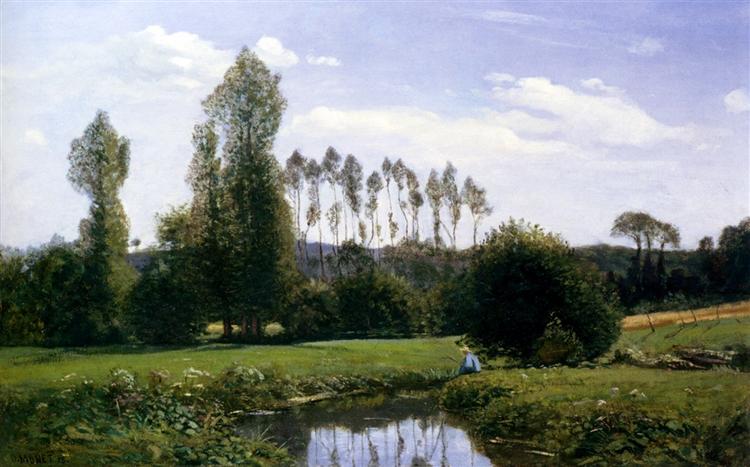




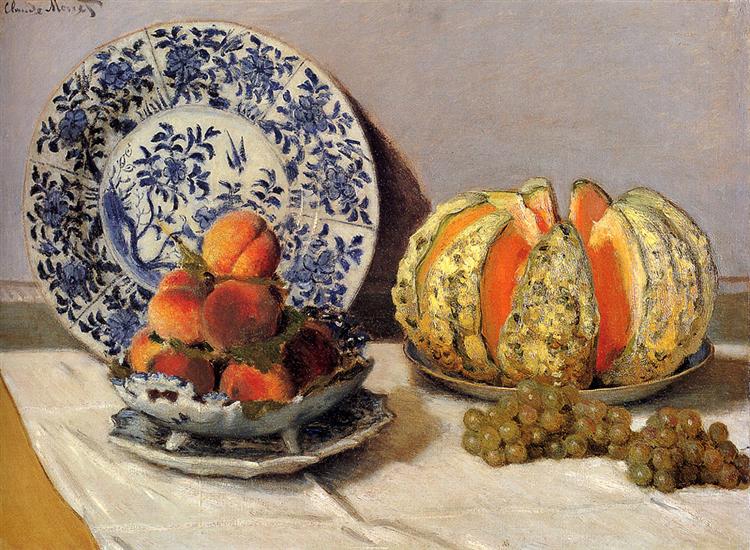
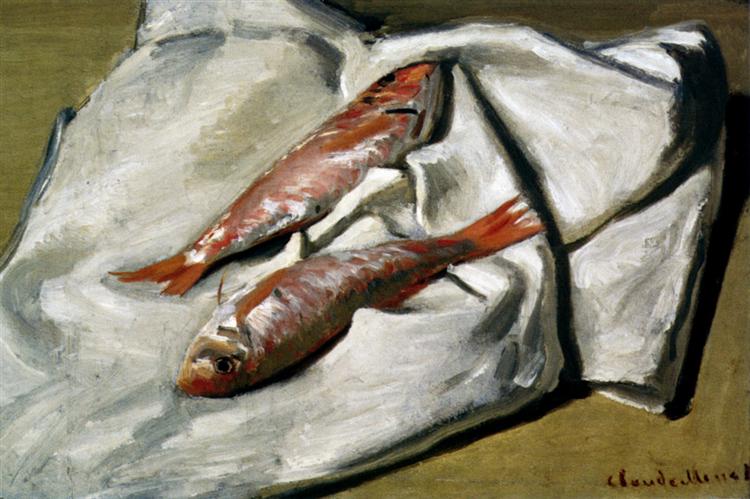


.jpg)
